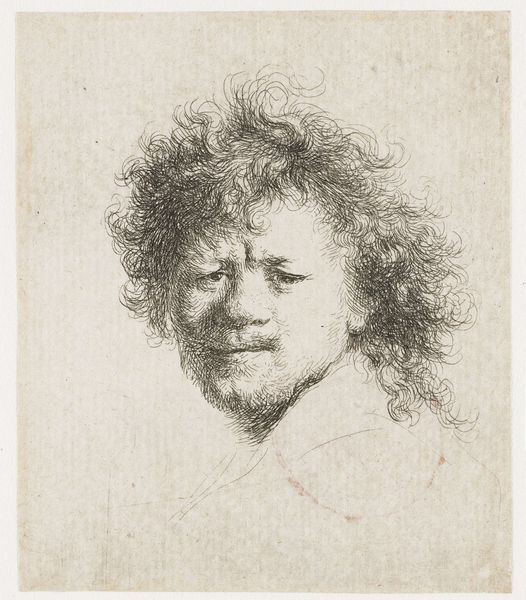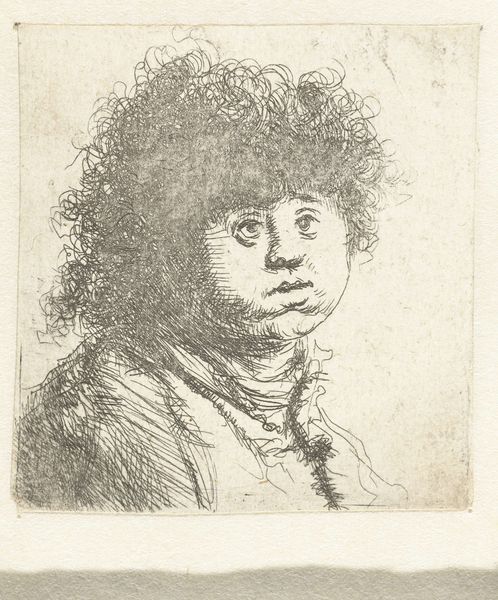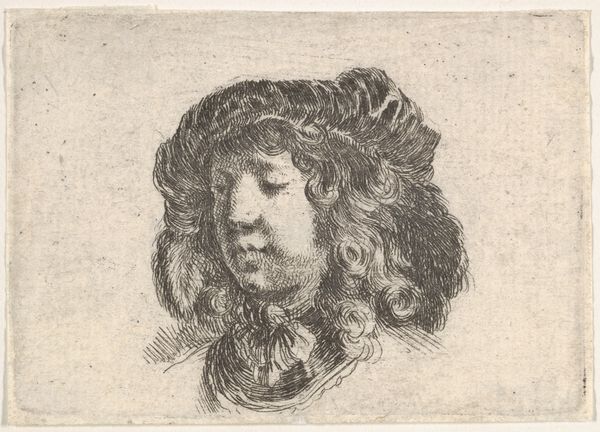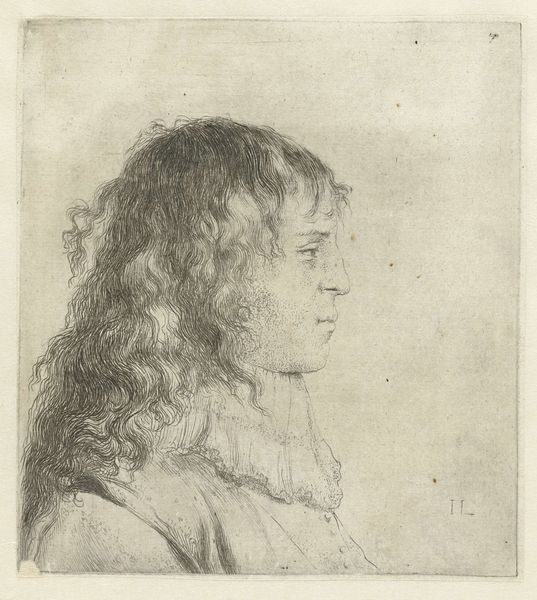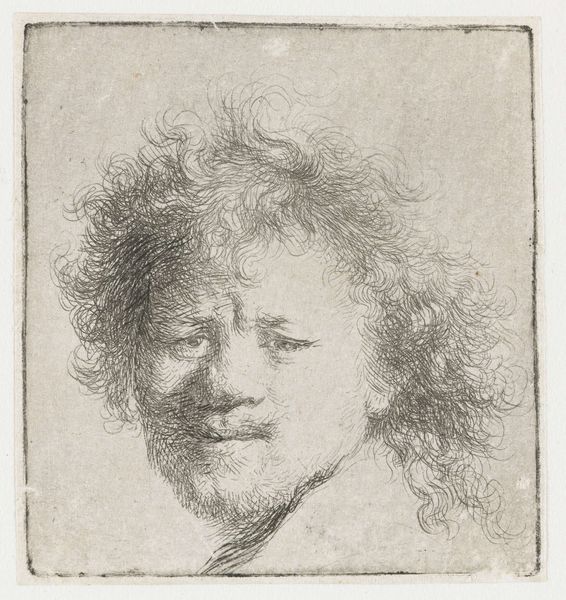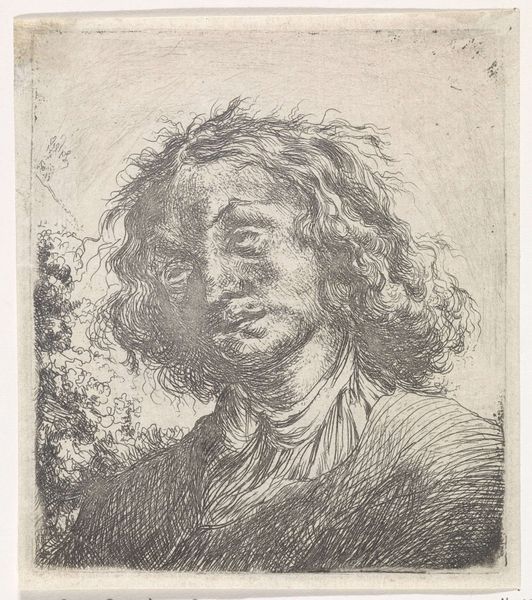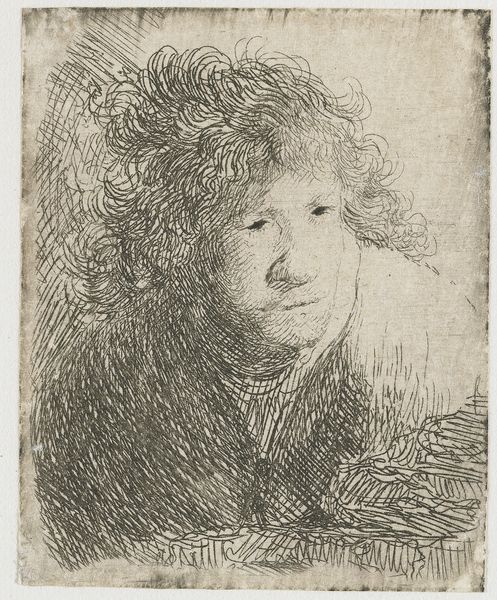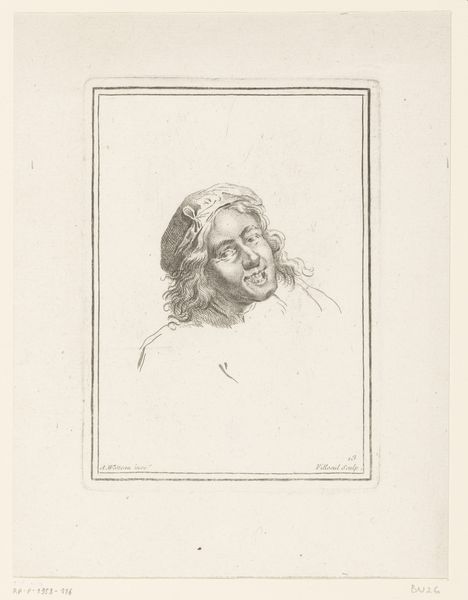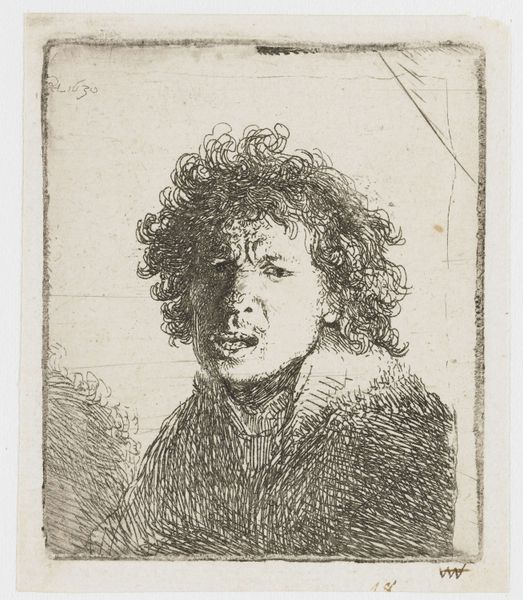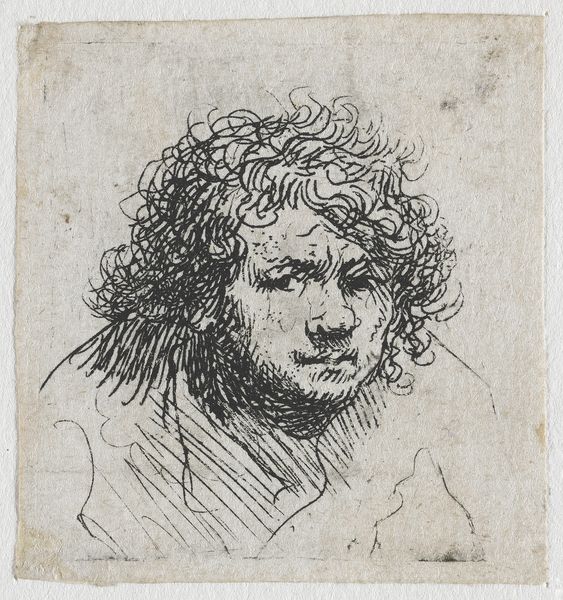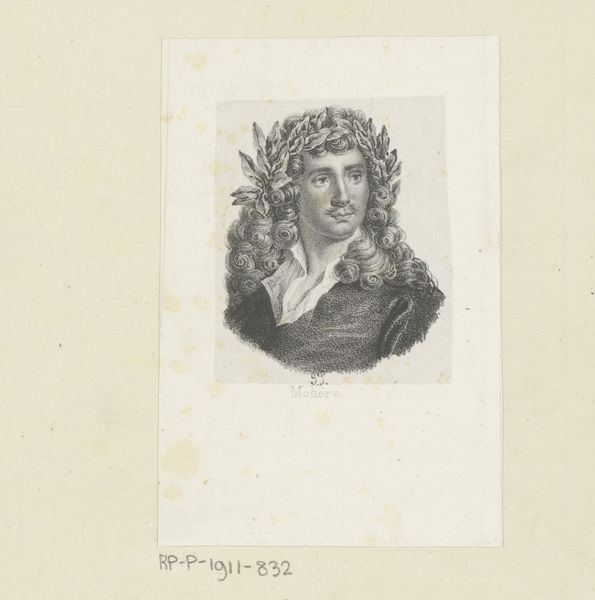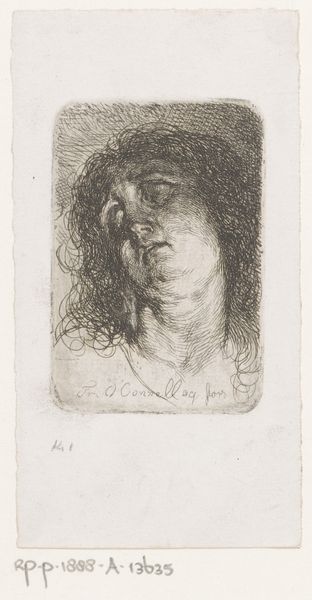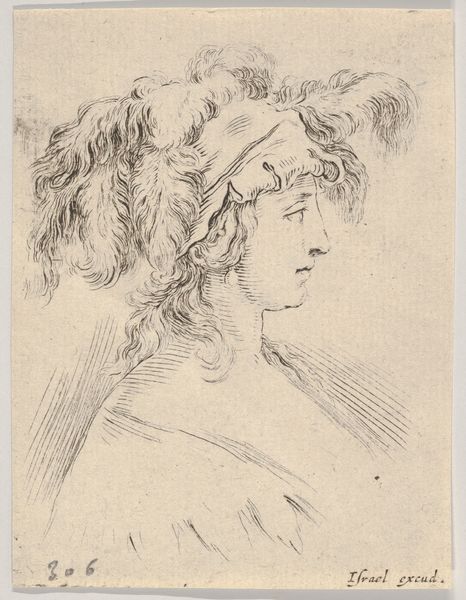
Dimensions: height 69 mm, width 69 mm
Copyright: Rijks Museum: Open Domain
Curator: Here we have a piece titled "Portret van Gerard de Lairesse," an engraving created between 1757 and 1825, attributed to baron Dominique Vivant Denon, and held at the Rijksmuseum. Editor: First impression? Whoa, that is a LOT of wig. Like, where does the hair end and the face begin? Seriously, it's an explosion of baroque curls! The face peering out seems almost…vulnerable, surrounded by all that formality. Curator: Well, you've touched on something interesting there. Lairesse was himself a significant artist of the Dutch Golden Age, known for his history paintings. The engraving highlights not only his status through the fashionable wig but also hints at the shifting dynamics within the art world. Denon's depiction of an elder artist carries a subtle commentary, perhaps, on the evolving aesthetic tastes. Editor: See, I knew there was more than just the hair! It's intriguing to consider that. There's something almost unsettling about those fine lines in the engraving; the artist has captured the weariness or resignation. It is almost like they tried to take a photo using the world's oldest camera. I imagine how people looked a long time ago in our days. Curator: The medium certainly plays a part. Engravings allowed for wide distribution of imagery. So, in a way, this image both immortalized Lairesse and also perhaps, solidified a certain perception of him within artistic circles and among the public. The line work creates a sense of texture, but the formal attire stands in contrast with what could have been an ordinary depiction. Editor: True, there's a definite sense of performance about it all. Almost like a backstage glimpse of an artist in character. Now, I'm wondering about the choices the engraver had in line directionality—almost radiating like rays! And now you're suggesting they wanted everyone to have their perception and keep the artist alive after life itself! Deep stuff, right? Curator: Precisely! What seems initially a simple portrait reveals layers of social context and artistic intention. This engraving acts as both a historical document and an early form of art criticism, capturing the changing tides within the art establishment of that period. Editor: Totally. Who knew that a simple engraving could hold such an intriguing commentary. I'm now definitely hooked, time to find me one and try it myself!
Comments
No comments
Be the first to comment and join the conversation on the ultimate creative platform.
